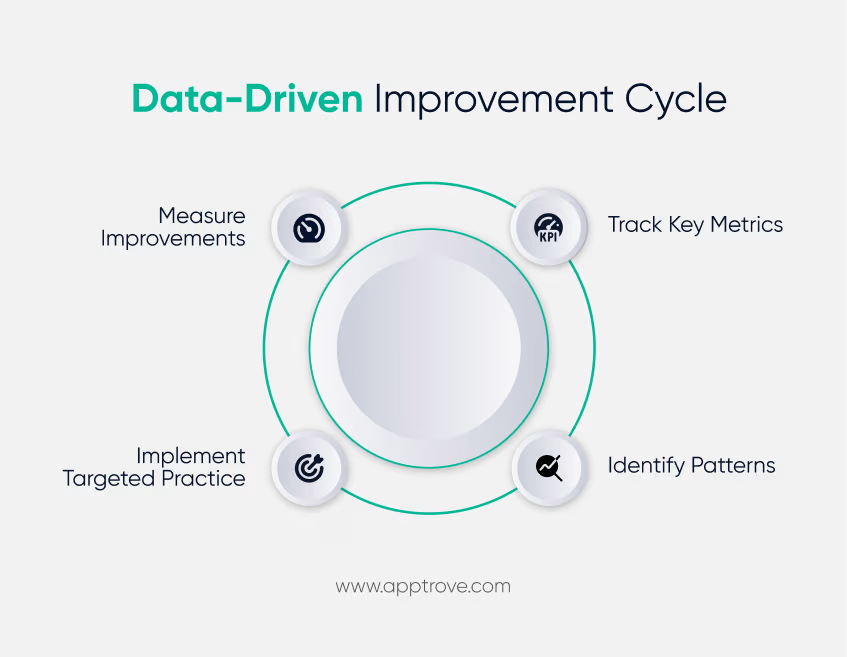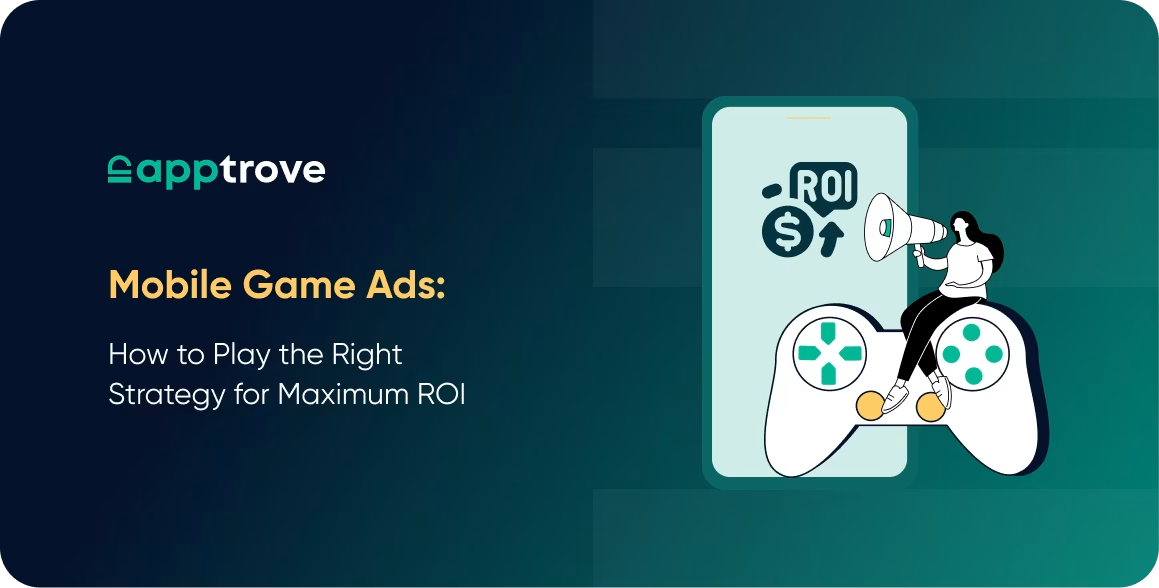In the competitive world of gaming, success isn’t just about instinct anymore – it’s about data. Key Performance Indicators, KPI for Average Gamer have evolved from professional esports tools to essential metrics for everyday players. Whether you’re dominating battle royales or exploring vast RPG worlds, understanding your personal gaming analytics can dramatically elevate your skills and enjoyment.
Apptrove helps you turn gameplay stats into real progress. Not sure what all the numbers mean? Our gaming analytics guide breaks it down in a way that actually makes sense. From small tweaks to big wins, it’s all about playing smarter — not just harder.
Why Smart Gamers Track Their Performance Data
Gaming has evolved beyond casual entertainment into a skill-based pursuit where small advantages make significant differences. According to Newzoo’s Global Games Market Report 2023, the global games market generated $183.9 billion in 2023 and is projected to reach $211.2 billion by 2025, growing at a compound annual growth rate (CAGR) of 3.4%. With such massive growth and increasing competition, players are seeking every possible edge.
Even if you’re not aiming for esports glory, measuring your gameplay objectively helps you:
- Identify specific weaknesses that might otherwise go unnoticed
- Set realistic improvement goals based on your actual performance
- Experience more satisfaction as you witness tangible growth
- Make smarter decisions about practice time allocation
Game-Changing KPIs Every Player Should Monitor

1. Win/Loss Ratio: Your Gaming Foundation
One of the most obvious gaming KPI for average gamers is the win/loss ratio. This metric provides a straightforward assessment of how often you succeed compared to how often you fall short. While winning isn’t always the sole indicator of skill—team-based games, matchmaking algorithms, and random elements can influence results—it remains a key measure of overall progress.
To improve your win/loss ratio, reviewing past performances is essential. Watching replays, identifying mistakes, and adjusting strategies based on game performance metrics can yield tangible improvements. Additionally, teaming up with skilled players can expose you to better tactics and sharpen your overall gameplay.
2. Kill/Death Ratio: Combat Efficiency at a Glance
For gamers who play competitive games like battle royales or FPS titles, the K/D ratio is one of the most referenced KPIs. A high K/D ratio means you’re effectively eliminating opponents while minimizing your own deaths, signaling strong game awareness and combat efficiency.
Many assume a high K/D ratio requires aggressive play, but survival tactics, positioning, and knowing when to retreat are just as important. Players who methodically choose engagements tend to maintain a healthier K/D ratio than those who dive into fights recklessly.
3. Accuracy Percentage: Precision Under Pressure
Precision matters in first-person shooters, strategy games, and action RPGs. Accuracy percentage tracks how many of your shots or actions land successfully compared to total attempts. Higher accuracy results in better resource management, higher damage output, and improved tactical execution.
Refining accuracy involves adjusting mouse sensitivity, using aim trainers, and developing better hand-eye coordination. Many pro players dedicate hours daily to accuracy improvement.
4. Score Per Minute (SPM): Your True Impact
While some gaming performance metrics focus on direct combat, the average score per game reflects overall consistency. Whether it’s points scored, objectives completed, or resources gathered, this metric measures your contribution to the game.
If your scores fluctuate significantly, it may indicate inconsistent strategy execution. Players who maintain a stable, high average score per game tend to have better situational awareness and adaptability.
5. Progression Rate: Long-Term Development
For games with leveling systems, ranking structures, or experience points, progression metrics provide long-term insights. Tracking your ranking system, XP gain rate, or completion rate helps identify stagnation points.
Monitoring progression ensures that you adapt to game updates, new strategies, and evolving in-game mechanics.
Leveraging Advanced Analytics Tools for Everyday Gaming
While basic statistics are available within most game interfaces, dedicated tracking platforms like Apptrove offer deeper insights. Apptrove’s gaming dashboard stands out by offering:
- Personalized improvement recommendations based on your gameplay patterns
- Visual performance tracking that highlights trends over time
- Comparative analysis against players at your current level and the next tier up
- Custom drill suggestions targeting your specific weakness areas
Real Players, Real Results
The impact of Key Performance Indicator (KPI) tracking extends beyond numbers. While specific statistics on the benefits of monitoring performance metrics are limited, existing research indicates a positive correlation between performance tracking and player satisfaction. For instance, a study involving 74 participants playing a First Person Shooter game found that satisfaction with one’s own performance significantly influenced game enjoyment. These insights suggest that monitoring and understanding personal performance metrics can lead to more enjoyable gaming experiences, regardless of skill level.
Transform Your Gaming Through Measured Improvement

KPI for average gamer isn’t about obsessing over numbers – they’re about understanding your unique gameplay profile. By focusing on these key metrics and using tools like Apptrove to interpret them, you’ll experience more consistent improvement and greater satisfaction.
Whether you’re aiming to climb competitive ladders or simply enjoy games more deeply, data-driven improvement represents the most efficient path forward. Start tracking today, and discover what your gameplay is really telling you.
FAQs
1. What does KPI for Average Gamer mean?
KPI for Average Gamer refers to specific metrics that track your gaming performance and help you understand your strengths and weaknesses. These key performance indicators have evolved from pro esports tools into valuable data points for everyday players. By analyzing these KPIs, you can make informed decisions to improve your gameplay.
2. Why should average gamers track their performance data?
Tracking your gaming data allows you to objectively assess where you excel and where you need improvement. It helps set realistic goals, focus your practice on weaknesses, and measure your progress over time. This approach makes gaming more strategic and rewarding, even if you’re not competing professionally.
3. Which KPIs are most important for the average gamer to monitor?
Important KPIs for average gamers include Win/Loss Ratio, which shows overall success, and Kill/Death Ratio, which measures combat efficiency. Accuracy Percentage tracks precision, Score Per Minute reflects your overall impact, and Progression Rate monitors long-term development. Together, these provide a comprehensive picture of your gameplay.
4. How can tools like Apptrove enhance my gaming improvement?
Apptrove offers personalized analytics and performance tracking tailored to your unique gameplay. It highlights trends over time, compares you with other players, and suggests drills targeting your weaknesses. This data-driven approach turns raw stats into actionable strategies, helping you improve smarter, not just harder.






